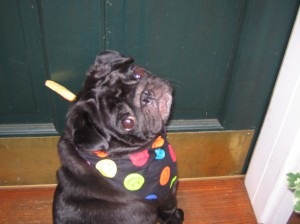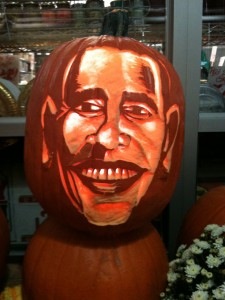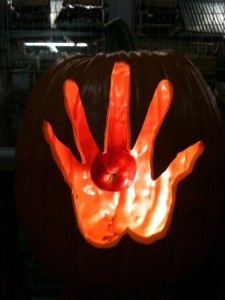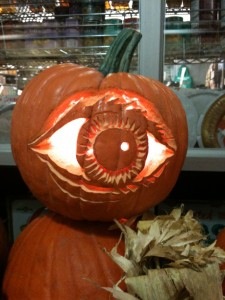I love my dog, Spike. That’s him in the picture. He’s extremely friendly and will happily play with just about anyone – especially if there’s some food involved. He’s also, as you can see, all black and small – which makes him very hard to see at night.
Safety Tips for Families With Dogs
Halloween may be a fun for people holiday, but it can be scary and/or dangerous for your dog. Spike was at the vet’s the other day and I picked up a sheet with the following information – not something we pet owners might necessarily think about. It is adapted from information supplied as a public service by Bark Busters Home Dog Training (www.BarkBusters.com) and extended to you by an all around dog lover, me.
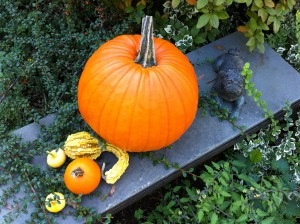
Bring your dog inside
You don’t want him to be harmed or overwhelmed by little (or big) trick or treaters. If your dog lives outside bring him in a few times before Halloween so he gets comfortable with being indoors. Dogs have a natural instinct to protect their families from strangers – and there are plenty of them on Halloween.
Think about restraining your dog or putting him in another room
Keep him away from the “trick or treaters” door. This is especially true if your dog gets easily frightened, or on the other side of the coin, loves people too much. Ditto for aggressive dogs. Putting the dog in another room away from the activity will limit his excitement, aggression, or the possibility of running outside, perhaps unnoticed, and getting lost or hurt.
Reassure your dog
If your dog is acting unsettled or anxious about Halloween high jinks, try to act normally because overly reassuring him or giving him extra attention might inadvertently communicate that there is something to worry about.
Get your dog used to people dressed up in costumes
Your dog may think his family members are strangers once they put on their Halloween garb. Let him sniff your kids’ costumes before they put them on and keep masks off when your dog is around.
Think twice about putting your dog in a costume
Some dogs enjoy – or at least tolerate – being dressed up. Many dogs don’t so experiment first to see if he likes being a bumble bee or a pirate. If he is resistant don’t do it – put a great bandana around his neck and he’ll be a whole lot happier – and probably safer.
Check your dog’s Identification Tags
Make certain that they are secure on his collar and that his collar is securely fastened on his neck. Enough said.
Dog biscuits are for dogs, candy is not
Many types of candy, especially the kinds with chocolate or xylitol, an artificial sweetener, are toxic to dogs. They can cause problems that range from a mild upset stomach to vomiting and diarrhea, and even death. Be sure to keep all candy and wrappers – and glow sticks, too – away from your dog.
Protect your dog from candles and pumpkins
When dogs get excited, agitated, or happy, their tails wag. Wagging tails and jumping dogs can easily knock over anything in their path – including lit candles or jack o’lanterns with candles in them. Keep these things away from dogs (and children) and think about using a battery powered candle for safety’s sake.
Think twice about taking your dog with you to the Halloween parade or trick or treating
Lots of people in weird (or cute) costumes with glow sticks, flashlights, masks, and other objects that go with costumes can be pretty frightening to a dog. You don’t want to unintentionally instill a new fear in him or create a wariness that could last long past Halloween. If you do take your dog with you, keep a firm grip on his leash. Dogs don’t understand that goblins jumping out at you are not necessarily doing so to hurt you – and they can respond by acting aggressively. Neither children nor adults in costumes and masks should approach a dog without asking for the owner’s consent.
